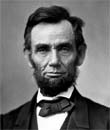
Day-by-Day Timeline of Events
December 20, 1860
South Carolina adopts an ordinance of secession, becoming the first slave state of the south to declare its intent to leave the Union.
January 5, 1861
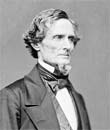
January 6, 1861
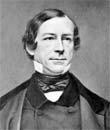
January 9, 1861
The state of Mississippi moves to secede from the Union, strengthening the growing Confederacy in the south.
January 10, 1861
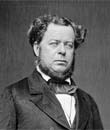
January 11, 1861
Alabama moves to secede from the Union, following Mississippi and Florida just days ago.
January 19, 1861
The state of Georgia officially secedes from the Union, joining its southern sister states in the new Confederacy.
January 29, 1861
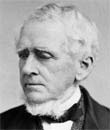
February 1, 1861
Texas declares it has seceded from the Union, joining a chorus of southern states in defiance of the north.
February 4, 1861
A provisional government arranged to head the affairs of the new south meet in Montgomery, Alabama.
February 4, 1861
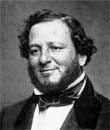
February 4, 1861
In an effort to settle the issue of slavery, representatives of some twenty-one states meet in Washington, D.C. to form the Washington Peace Conference. The conference runs until February 27th.
February 8, 1861
Confederate government leaders announce the name of "Confederate States of America" to mark their new union.
February 9, 1861
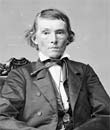
February 18, 1861
Confederate leaders in Montgomery inaugurate officers to head up various positions in the new government.
February 21, 1861
Stephen Mallory is appointed Secretary of the Navy for the Confederate States of America.
February 21, 1861
President-elect Abraham Lincoln makes a stop in Philadelphia, Pennsylvania. He is made aware of an assassination plot against his life. In response a special train journey is arranged for him to Washington, D.C.
February 22, 1861
Abraham Lincoln, the President-elect of the United States, arrives safely in Washington, D.C.
February 23, 1861
Texans go to the polls and overwhelmingly reaffirm their intent to secede from the Union.
February 23, 1861
Abraham Lincoln, President-elect of the United States, has his inaugural photograph taken at Matthew Brady's studio.
February 25, 1861
The Confederate government names Judah Benjamin, a former U.S. senator, as its first Attorney General.
March 2, 1861
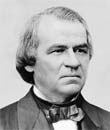
March 4, 1861
Abraham Lincoln is officially inaugurated as the next President of the United States, succeeding James Buchanan.
March 4, 1861
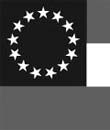
March 5, 1861
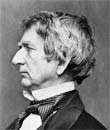
March 6, 1861
The Provisional Army of the Confederate States is established by the Confederate government.
March 21, 1861
In a speech given during a stop in Savannah, Georgia, Confederate Vice President Alexander H. Stephens reaffirms the southern stance on slavery.
April 6, 1861
President Lincoln notifies the government of South Carolina that general supplies will be sent to Fort Sumter at Charleston Harbor - he gives his assurances that any strengthening of the position will only be made if the Fort is in danger of attack.
April 15, 1861
President Lincoln calls for a special session of Congress to discuss the growing rebellion in the south.
April 15, 1861
President Lincoln pushes for 75,000 soldiers who will each serve three-month tenures.
April 16, 1861
With the stroke of a pen, President Lincoln abolishes the practice of slavery in Washington, D.C.
April 16, 1861
President Lincoln calls on all states in the Union to cease doing business with those southern states that have moved to secede.
April 17, 1861
Confederate President Jefferson Davis calls on any and all privately-own vessels allied to the southern cause to openly attack Union merchants.
April 18, 1861

April 19, 1861
President Lincoln calls on all southern ports to be blockaded, the territories in question being the lower East Coast all the way to the Gulf of Mexico.
April 20, 1861
To avoid further clashes with troops, Baltimore formally asks President Lincoln to refrain from having military forces pass through the city.
April 20, 1861
Telegraphs are confiscated by the United States government to help identify those that would cause harm to the Union.
April 20, 1861
American citizens are arrested throughout Baltimore, Boston and New York without due process - brought about by warrants issued under the name of the United States Secretary of State.
April 21, 1861
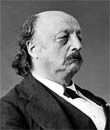
April 22, 1861
The United States government moves in to take over the now-vacated estate of Robert E. Lee, known as "Arlington House". The estate sat on the Potomac River.
April 23, 1861

April 24, 1861
Virginia formally aligns its state military capabilities with that of the Confederate Army.
April 29, 1861
Confederate President Jefferson Davis calls a special session of congress to address recent developments - including the capture of Fort Sumter by South Carolinian forces.
April 29, 1861
The Confederate Congress convenes in Montgomery (Alabama) to tackle several issues. The group will gather until May 21st.
May 3, 1861
President Lincoln asks Congress for additional troops for three-year terms - hoping to bolster the ranks of the Army and Navy services. Some 42,000 volunteer forces are required.
May 7, 1861
The state of Tennessee formally aligns its military capabilities with that of the Confederacy.
May 10, 1861
State authorities of Maryland pass a resolution decrying the war against the south. It decides to take a neutral stance in the growing conflict.
May 13, 1861
Britain declares herself neutral in the American conflict and fails to officially recognize the Confederate States of America.
May 16, 1861
In an effort to strengthen its forces, the government of the Confederacy offers $10 enlistment bonuses.
May 21, 1861
Richmond, Virginia becomes the official national capital of the Confederacy of the United States.
June 8, 1861
The Kentucky government keeps its military forces neutral in the ongoing - and growing - conflict between the north and south.
June 11, 1861
Union loyalists in Western Virginia arrange their own local government. The work lasts through June 19th.
June 14, 1861
Acting governor of Virginia, John Letcher, calls on West Virginians to join the Confederate cause.
July 2, 1861
President Lincoln suspends "writ of habeas corpus" in unique circumstances - the writ allowing a person the right to report an unlawful detention or imprisonment before a court.
July 4, 1861
President Lincoln, in a special session of Congress, asks for 500,000 men for the Union war effort. Current Union strength numbers 260,000 men with 165,000 of these being volunteers.
July 19, 1861
Robert Toombs, the acting Secretary of State for the Confederacy, resigns his post to lead forces in Georgia as a brigadier general.
July 19, 1861
Robert Hunter succeeds Robert Toombs in the post of Secretary of State for the Confederacy.
July 20, 1861
The Confederate Congress meets once more, this time in the new capital of Richmond, Virginia. The group will convene until August 31st.
July 22, 1861
The United States Congress pushes through a resolution that declares the raging war to be about the preservation of the Union and not the ending of slavery.
July 30, 1861

August 5, 1861
The federal government issues the first-ever income tax to help finance the Union war effort.
August 6, 1861
The Second Confiscation Act is passed by the United States Congress. Details include forfeiting of slaves should one be caught aiding the Confederate war effort.
August 6, 1861
Having completed much-needed work, the United States Congress ends its special session.
August 12, 1861
The Confederates announce an alliance with Indian tribes located within southern territories.
August 21, 1861
Cherokee Indians meet at Tahlegue and announce their alliance with the Confederate States of America. Their numbers total 4,000.
August 23, 1861

August 30, 1861
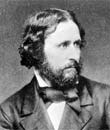
August 31, 1861

September 2, 1861
The emancipation of Missouri slaves by Union General John C. Fremont is put down by President Lincoln. He is then reassigned.
September 5, 1861
In an effort to elevate care for the Union wounded in the Western Theater, the Western Sanitary Commission is established in St. Louis, Missouri.
September 11, 1861
The state government of Kentucky calls for the removal of Confederate troops from its soil. The demand falls on deaf ears.
September 13, 1861
President Lincoln turns down a request by Chicago-area group to issue an emancipation proclamation. The president is convinced the action would sway border states to the Confederate cause.
October 1, 1861
Confederate generals request 20,000 additional troops to take Maryland. Their request is denied by President Jefferson Davis.
October 2, 1861
To avoid arrest as a traitor, United States Senator John C. Breckinridge escapes Kentucky to join the Confederate cause.
October 17, 1861
To this point, notes issued by the Confederate Treasury have raised $100 million in support of the war.
October 21, 1861
U.S. Army Colonel Edward Baker, a longtime and close friend of President Lincoln, is killed at Ball's Bluff, Virginia. He becomes the only sitting senator to be killed in action during the war.
October 24, 1861
Tennessean William Brownlow releases the final edition of the newspaper "Knoxville Whig" which has stood in support of anti-secession.
November 1, 1861
General McClellan is named General-in-Chief of all United States military forces by President Abraham Lincoln.
November 18, 1861
At Russellville, Kentucky, some authorities gather to vote for independence. George Johnson is named its new governor.
November 18, 1861
Author and poet Julia Ward Howe witnesses a review of Union troops outside of Washington, D.C. inspiring her to produce a new work.
November 19, 1861
To better meet the need for resupply and reinforcements, Confederate President Jefferson Davis implores the Congress to fund the construction of an East-West railway system.
November 25, 1861
Judah Benjamin, the Confederate Secretary of War, calls on all East Tenessee traitors to be executed where they stand.
December 2, 1861
In the next meeting of the United States Congress, President Lincoln calls for a new railroad to be constructed to help in the Union war effort.
December 20, 1861
Viewing Lincoln as too much a pacifist, the "Radical Republicans" of the United States Congress arrange the Joint Committee on the Conduct of the War.
December 21, 1861
The Navy Medal of Honor is signed into law by President Lincoln (Public Resolution 82).
December 26, 1861
To avoid war with Britain, Confederate-aligned commissioners captured two months earlier on the British ship "Trent" are released.
January 1, 1862
The Confederate commissioners captured on the British steamer Trent continue their voyage to Europe - ending the "Trent Affair".
January 14, 1862
"Battle Hymn of the Republic" is published for the first time, this in the New York Herald Tribune.
January 22, 1862
In an effort to raise enlistment numbers, the Confederate government announces an increase to the enlistment bonus to $50 (from $10).
January 27, 1862
In an effort to stir General McClellan to action, President Lincoln announces a deadline of February 22 for an all-out advance of Union forces against confederate positions.
January 1, 1862
A disagreement between Secretary of War Judah Benjamin and General Thomas "Stonewall" Jackson nearly leads to the resignation of the talented general. Jackson ultimately wins the showdown.
February 4, 1862
The price of saltpeter, compounds needed for the manufacture of gunpowder, is raised to 0.40 cents per pound by Confederate Secretary of War Judah Benjamin.
February 13, 1862
West Virginia authorities pass a law that restricts slaves and people of color from being given permanent residency.
January 17, 1862
To award wartime service going above-and-beyond the norm, a motion to create the nation's first "Medal of Honor" passes a hurdle in Senate voting.
February 20, 1862
Willie Lincoln, son of the President of the United States, succumbs to fever at the age of eleven.
February 22, 1862
The Confederate government officially swears in permanent authorities in the capital of Richmond, Virginia.
February 22, 1862
Andrew Johnson is announced as military governor by President Lincoln over Union-held territories of Tennessee.
March 6, 1862
To assuage Union border states, President Lincoln pushes for compensation to slave owners who end up losing their slaves.
March 11, 1862
Having grown tired of General McClellan's inaction to this point in the war, President Lincoln moves to take the General's title of General-in-Chief away. McClellan continues to lead as commander of the Army of the Potomac.
March 13, 1862
General Robet E. Lee begins his term as a military adviser to Confederate President Jefferson Davis.
April 1, 1862
Confederate military authorities revoke all leave permissions due to the growing war commitment - with particular attention being paid to manpower availability.
April 10, 1862
Once again President Abraham Lincoln is forced to plead for General McClellan to move to action in Virginia - comparing the current offensive with what was witnessed at Manassas some time earlier.
April 16, 1862
Running short of new recruits, the Confederate government installs conscription for white males aged 18 to 35. A three-year commitment is required.
April 16, 1862
Following the abolition of slavery in Washington, D.C., Congress pushes through a measure to compensate former slave owners in the D.C. area.
April 21, 1862
The Confederate Congress completes its round of latest meetings at Richmond, Virginia.
April 21, 1862
With Union forces making headway towards Richmond, Virginia, the Confederate Congress gathers in an emergency session.
May 20, 1862
The Homestead Act is signed into law by President Lincoln. This is arranged to encourage western migration for settlers and offered to those who have not gone against the Union.
June 1, 1862
Robert E. Lee concludes his term as military adviser to Confederate President Jefferson Davis.
June 6, 1862
The Army of Virginia (formerly the Army of the Potomac) is now handed to General John Pope per President Lincoln's order.
July 2, 1862
The United States Congress passes a law forcing oaths to the Union cause to be given by governmental and military officials.
July 7, 1862
Under the direction of Union General Benjamin Butler, William Mumford is hanged in New Orleans for his April removal of an American flag.
July 11, 1862
General Henry W. Halleck is appointed General-in-Chief over Washington, D.C. by President Lincoln.
July 17, 1862
The Second Confiscation Act is passed by the United States Congress. The act frees those slaves owned by southern supporters.
September 22, 1862
President Lincoln's Emancipation Proclamation is set to take effect on January 1st, 1863. The proclamation covers only those slaves in Confederate-governed states but excludes those border states supporting the Union.
September 26, 1862
In an effort to boost the Confederate economy and broaden its base of allies, the Committee on Foreign Affairs calls on President Jefferson Davis to open Southern markets and waterways to Northwest states.
September 27, 1862
Confederate conscription is extended and now includes men from the ages of 35 to 45.
October 11, 1862
The Confederate Conscription Act is amended to exclude those managing twenty or more slaves.
October 13, 1862
The Confederate Congress ends its latest round of meetings in the capital of Richmond, Virginia.
November 1, 1862
Across the Atlantic, Napoleon III of France calls on European allies to help end the bloody war in America.
November 17, 1862
The British ambassador to Washington, D.C. delivers a message to British leaders indicating that Democrats are interested in ending the war despite any potential state losses to the Union.
November 29, 1862
Following Union General Philip Kearny's death at the Battle of Chantilly in September of 1862, the Kearny Medal for Officers is established.
December 1, 1862
Abraham Lincoln addresses the U.S. Congress. In his speech, he declares openness to allowing freed slaves the option to resettle in other countries.
December 17, 1862
General Grant forces out all merchant Jews under his district control due to Treasury violations (black market dealings involving cotton). This is known as General order No.11 and includes Jews in Tennessee, Mississippi and Kentucky.
December 23, 1862
To dissuade further involvement of free blacks in Union ranks, the government of the South decrees that any captured freed slaves fighting under the Union banner face prosecution under local laws. This includes both punishment and execution for fighting the South.
December 23, 1862
Confederate President Davis makes a call to label Union General Benjamin Butler an "outlaw" in response to Butler's earlier message regarding New Orleans' women.
December 26, 1862
In a speech to Mississippi lawmakers, President Davis details Northern aggression and violations of southern women and property.
January 1, 1863
Lincoln's Emancipation Proclamation goes into effect. The proclamation does not cover those slaves residing in states within the Union itself.
January 4, 1863
President Lincoln is at odds with General Grant on the topic of expelling Jewish merchants operating within Grant's military district. He calls on Grant to repeal the earlier expulsion order.
January 12, 1863
The Confederate Congress begins another round of meetings in the Confederate capital of Richmond, Virginia.
February 24, 1863
The Territory of Arizona is established by the American government. Fort Whipple is named its capital and John Goodwin its governor.
March 3, 1863
To help strengthen Union numbers, the Enrollment Act (Civil War Military Draft Act), the first of its kind in U.S. history, is enacted. It covers those aged 20 to 45.
March 3, 1863
The U.S. government passes a resolution opposing foreign intervention in the bloody American conflict.
March 3, 1863
The U.S. Congress declares the Medal of Honor award now open to officer-level persons.
March 13, 1863
The late Philip Kearny is honored by the establishment of the Kearny Cross award arranged for privates and non-commissioned officers.
March 17, 1863
The Provost Marshall Department if created by the U.S. government. The department will head the military police and drafting of new personnel into the armed services.
April 5, 1863
It is revealed that thousands of Confederate prisoners have died in captivity at Camp Douglas in Chicago, Illinois.
April 30, 1863
President Lincoln calls for a day of "Humiliation, Fasting and Prayer" amidst the growing, bloody years-long conflict between the North and South.
April 30, 1863
The Great Seal of the Confederate States of America is adopted by the South. It pictures George Washington on a white horse. Above him are the words "Confederate States of America: 22 February 1862. Below is the motto "Deo vindice" ("God as Our Champion").
May 1, 1863
Confederate General John Hunt Morgan's raiding actions are formally recognized by the Confederate Congress.
May 5, 1863
With vocal and public opposition to to Lincoln's war, Congressman Clement Vallandigham (Ohio) is arrested.
May 14, 1863
The Women's Loyal National League is formed, organized by Elizabeth Stanton. Its president is Susan B. Anthony. It is recognized as the first national women's political organization and seeks an amendment for the U.S. Constitution that officially abolishes slavery.
May 19, 1863
Vocal war critic (and now disgraced U.S. Congressman) Clement Vallandigham is banished to the South by President Lincoln.
June 22, 1863
West Virginia, a breakaway territory of Virginia proper, becomes the 35th state in the Union.
June 30, 1863
West Virginia officially becomes a supporter of the Union cause in the Civil War and commits its resources to the conflict
July 4, 1863
Former U.S. President Franklin Pierce delivers a speech in Concord, New Hampshire reminding listeners of the value of liberty in the ongoing conflict which has seen the American military grow in strength and influence.
July 13, 1863
The North and South will no longer adhere to the prisoner exchange agreement from earlier in the war.
July 13, 1863
Over a dozen civilians are killed during rioting in New York after the release of names from the first Union military draft. The rioting spans July 13th until July 16th and involves some 50,000 New Yorkers.
July 30, 1863
The Order of Retaliation is handed down by President Lincoln. The measure calls for the execution of one Confederate soldier for every one Union soldier killed in violation of the rules of war.
October 3, 1863
"Thanksgiving Day" is formally announced by the United States government. It will be celebrated annually from then on.
October 16, 1863
Command of the armies of the West are handed to General Ulysses S. Grant by order of President Lincoln.
November 13, 1863
Pope Pius IX receives Confederate representative Colonel A. Dudley Mann at the Vatican. The visitor brings with him a letter penned by Confederate President Jefferson Davis.
November 19, 1863
The Gettysburg Address is delivered by President Lincoln on the battlefield itself. It becomes one of the most revered and iconic speeches in American history despite its rather short length. The speech serves to dedicate the Soldier's National Cemetery in Gettysburg proper.
December 4, 1863
Robert E. Lee's former estate at Arlington, Virginia, is dedicated as Freedman's Village to serve as home to some 1,100 former slaves.
December 7, 1863
Confederate President Jefferson Davis addresses his congress as the Southern cause reaches a low point following the loss of Chattanooga.
December 7, 1863
President Lincoln calls on church-goers to thank God for the Union victory at Chattanooga.
December 7, 1863
The Proclamation of Amenesty and Reconstruction is issued by President Lincoln. The measure is part of Lincoln's plan for reunification and provides pardons to Confederates willing to take an oath of loyalty to the United States of America.
December 8, 1863
In an address to Congress, President Lincoln reveals that around 100,000 former slaves have joined the Union ranks in the fight against the South.
December 11, 1863
Pope Pius IX acknowledges Jefferson Davis as the "President of the Confederate States of America" in a return letter.
December 17, 1863
General Grant, for his services (and successes) in the ongoing war is recognized by the U.S. Congress by way of an official thanks and a gold medal.
January 2, 1864
Confederate General Patrick Cleburne suggests that some slaves be made free to help fight in the Southern Cause.
February 19, 1864
Like General Grant, General Sherman receives an official thanks for his services in the ongoing war - namely his direction of the Chattanooga victory.
March 2, 1864
Confederates find plans to burn Richmond and kill Confederate President Davis. The information is found on the deceased body of Ulric Dahlgren following his unsuccessful raid into Richmond.
April 8, 1864
A move towards abolishing slavery in the United States is made when the 13th Amendment is passed by the U.S. Senate. The measure passes by a vote of 38 to 6.
April 18, 1864
In a speech given at the Sanitary Fair at Baltimore, President Lincoln cautions against retaliation.
April 22, 1864
"In God We Trust" is added to U.S. coins. The phrase is pushed through by the United States Congress.
May 1, 1864
After a fall from the balcony of the Confederate White House, President Jefferson Davis' son Joe dies of his injuries. he was five years old.
May 31, 1864
The "Radical Democracy Party", a divisional group of the Republican Party, nominates former Union General John Fremont to run against incumbent Abraham Lincoln in the 1864 election.
June 7, 1864
Abraham Lincoln and Andrew Johnson are elected by the Republican Party to run for a second term in office. The party convention is held in Baltimore, Maryland with the war still ongoing.
June 15, 1864
The 13th Amendment of the Constitution, intended to abolish slavery, is defeated in the House of Representatives by a vote of 95 to 66.
June 16, 1864
During a speech in Philadelphia, Pennsylvania, President Lincoln calls for more troops to finish the fight.
June 28, 1864
The Fugitive Slave Act of 1850 is repealed. The measure is officially signed by President Lincoln. The law called for recaptured runaway slaves in Northern territories to be returned to their masters in the South.
June 30, 1864
To help finance the ongoing war, the United States government passes the Internal Revenue Act. This allows the government to increase income tax rates.
July 2, 1864
The Wade-Davis Bill of 1864, covering a proposal for reconstruction of the South following a conclusion to the war, is passed by both houses of Congress. However, much to the dismay of Radial Republicans, Lincoln does not sign the bill. Instead it is vetoed as Lincoln looks for a less severe plan. Authors of the Wade-Davis Bill are Senator Benjamin Wade (Ohio) and Representative Henry Winter Davis (Maryland).
July 4, 1864
A bill proposing that the U.S. Congress be placed in charge of the reconstruction of the South following the war is vetoed by Presidetn Lincoln.
July 4, 1864
A new provision signed into law by President Lincoln now guarantees a $100 yearly bonus to Union troops.
July 5, 1864
The New York Times is the recipient of a initial peace plan authored by the Confederacy.
July 11, 1864
Fort Stevens in Washington, D.C. is fired upon by elements of Confederate General General Early (the Battle of Fort Stevens). This occurs during a visit by President Lincoln.
July 17, 1864
The Army of Tennessee sees a new commanding officer named - General John Hood succeeds General Joseph Johnston. The appointment is made by President Davis himself.
July 18, 1864
The Confederate government sees a new Secretary of the Treasury appointed in George Trenholm. He succeeds outgoing secretary Christopher Memminger.
Aigust 29, 1864
Union General George McClellan is nominated by the Democratic Party in Chicago, Illinois. He will square-off in the Presidential Election of 1864 against incumbent Abraham Lincoln.
September 8, 1864
Union General George McClellan accepts the Democratic candidacy for President of the United States.
October 10, 1864
The state of Maryland adopts a new constitution aimed at officially ending the practice of slavery within its borders.
November 8, 1864
Incumbent President Abraham Lincoln (a Republican) wins a second term in the unprecedented election held during the American Civil War. He handily defeats Union General George McClellan (a Democrat) 212 to 21 Electoral Votes. Though Louisiana and Tennessee are firmly under Union control, their electoral votes are not counted officially. Lincoln's running mate is Andrew Johnson. Lincoln carries Illinois but does not win Kentucky.
November 8, 1864
Despite the ongoing war, the President Election is held on this date. Incumbent Abraham Lincoln decisively wins over challenger General George McClellan. Andrew John remains as Vice President.
December 6, 1864
Salmon Chase, the former Secretary of the Treasury, is appointed to the Supreme Court by President Lincoln.
December 26, 1864
President Lincoln, by letter, personally thanks General William Sherman for his successful campaign - his 'March to the Sea' - which began on November 15th that finally delivered Savannah, Georgia in time for Christmas.
January 10, 1865
Congress formally congratulates General Sherman on his exploits across Georgia resulting in the capture of Savannah.
January 11, 1865
Missouri, a Union state, adopts a resolution abolishing the practice of slavery within its borders.
January 11, 1865
General Robert E. Lee, realizing the fortunes of the Confederacy are growing limited, announces his support for a gradual freedom for slaves.
January 16, 1865
Confederate President Jefferson Davis discusses peace with Francis Blair, Sr, advisor to President Lincoln. The talks are held in secret.
February 3, 1865
Alexander Stephens, representing the Confederacy as its Vice President, offers a peace to President Lincoln during a meeting taking place at Hampton Roads in Virginia. The peace overture is rejected by the President.
February 4, 1865
John C. Breckinridge is appointed the new Secretary of War for the Confederacy. The appointment is managed by Confederate President Davis himself.
February 5, 1865
In an effort to help end the bloodshed of the Civil War, President Lincoln offers monetary compensation to the South pending their acceptance of the 13th Amendment and a cessation of fighting. However, Lincoln's own people do not support the plan so it is dropped.
February 9, 1865
The U.S. Congress officially congratulates General Philip Sheridan on his exploits centering on the Shenandoah Valley Campaign.
February 9, 1865
Andrew Stephens, acting Vice President of the Confederacy, departs from the capital of Richmond, Virginia to Georgia.
February 23, 1865
The Confederate Senate rejects a proposal that would see as many as 200,000 blacks infused into the Confederate ranks.
March 2, 1865
Confederate General Robert E. Lee offers peace negotiations to President Lincoln. The overture is rejected.
March 3, 1865
The Freedmen's Bureau is established by the United States government to aid newly-freed slaves. The organizations formal name is 'Bureau of Refugees, Freedmen, and Abandoned Lands' as is part of the Reconstruction initiative the Union plans for the South following the end of the war.
March 4, 1865
The second inauguration of President Lincoln is had on this date. In the audience is future assassin, actor John Wilkes Booth.
March 4, 1865
A new national flag is approved by the Confederate Congress - the Confederate National Flag, Third Pattern. The pattern is the third of three seen during the conflict with the First Pattern showcasing a ring of stars and three stripes (red-white-red). The Second Pattern showcases the traditional Confederate flag in the upper left corner but the broad use of white space is deemed too close to a flag of surrender. Thus a new flag is commissioned as the Third Pattern.
March 17, 1865
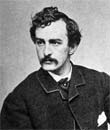
March 24, 1865
President Lincoln begins a three-week visit to General Grant at his headquarters in City Point, Virginia. Among those in attendance is General Sherman.
March 28, 1865
In a meeting with top officers, President Lincoln pushes for surrender of the Confederacy under softer terms.
April 2, 1865
Confederate President Jefferson Davis is advised by General Lee to leave Richmond, Virginia.
April 3, 1865
Important government documents and gold reserves from the Confederate capital of Richmond, Virginia, are relocated for safety.
April 5, 1865
President Lincoln tours the former Confederate capital of Richmond following its capture by Union forces.
Aptil 5, 1865
Confederate President Davis attempts to rally the people of the south after the fall of Richmond.
April 14, 1865
On this date (Good Friday), President Lincoln is shot by actor John Wilkes Booth during the play "Our American Cousin" at the Ford's Theater in Washington, D.C. Other targets of the attack are Andrew Johnson and William H. Seward.
April 14, 1865
In the same attack that would claim the life of President Lincoln, Secretary of State William Seward is stabbed but survives.
April 15, 1865
President Lincoln dies from his wound at 7:22AM at the Petersen house across the street from Ford's Theater.
April 19, 1865
Lincoln's funeral procession takes place down Pennsylvania Avenue in Washington, D.C.
April 19, 1865
Confederate President Davis, now in Charlotte (North Carolina) is informed of President Lincoln's assassination and death.
April 21, 1865
The Lincoln Funeral Train departs Washington, D.C. en route to Springfield, Illinois.
April 23, 1865
Confederate President Davis attempts to negotiate a favorable peace calling for southern states to be allowed entrance into the Union without changes. The North rejects this request.
April 26, 1865
After a lengthy manhunt for President Lincoln's killer, John Wilkes Booth is surrounded in a barn on rural Virginia farm (Port Royal). The barn is set ablaze and Booth is fatally shot.
April 26, 1865
Charlotte, North Carolina is the site of the final meeting of the Confederate congress.
April 29, 1865
President Davis and several of his cabinet meet in Yorkville (York) in South Carolina and plan to relocate the Confederate government headquarters to Texas.
May 2, 1865
Acting President Andrew Johnson places a bounty of $100,000 on the head of Confederate President Jefferson Davis.
May 5, 1865
Captain Micajah Clark is announced as the Confederate's treasurer. This is President Jefferson Davis' final act as President of the Confederacy in the war. The act takes place in Washington, Georgia.
May 4, 1865
Slain President Abraham Lincoln is laid to rest at Oak Ridge Cemetery (Springfield, Illinois).
May 4, 1865
While attempting to escape, Confederate President Jefferson Davis is taken prisoner by Northern forces near Irwinsville, Georgia.
May 11, 1865
Alexander Stevens, former Vice President of the Confederate States, is arrested in Georgia.
May 23, 1865
The Grand Review is held in Washington, D.C. by the Union Army covering a two-day span.
June 6, 1865
Amnesty is offered by the federal government to those Confederate prisoners-of-war who agree to not have fought against the Union by choice.
August 17, 1865
Nurse Clara Barton raises the American flag over the Andersonville National Cemetery in Andersonville, Georgia. The site is near the Andersonville prisoner-of-war camp.
August 30, 1865
Judah Benjamin, former Confederate Secretary of State, safely reaches English shores.
August 31, 1865
Washington College of Lexington, Virginia names former Confederate General Robert E. Lee as its president. The college will one day be renamed to Washington and Lee University.
November 10, 1865
The commanding officer and overseer - Major Henry Wirz - of the infamous Andersonville prison camp at Andersonville, Georgia is hanged. He is the only enemy authority to be hanged a war criminal. The event takes place in Washington.
December 1, 1865
The Writ of Habeas Corpus, suspended by now-slain U.S. President Abraham Lincoln, is reestablished by President Andrew Johnson.
December 6, 1865
The 13th Amendment is ratified by the U.S. government, legally ending slavery in the United States of America.


